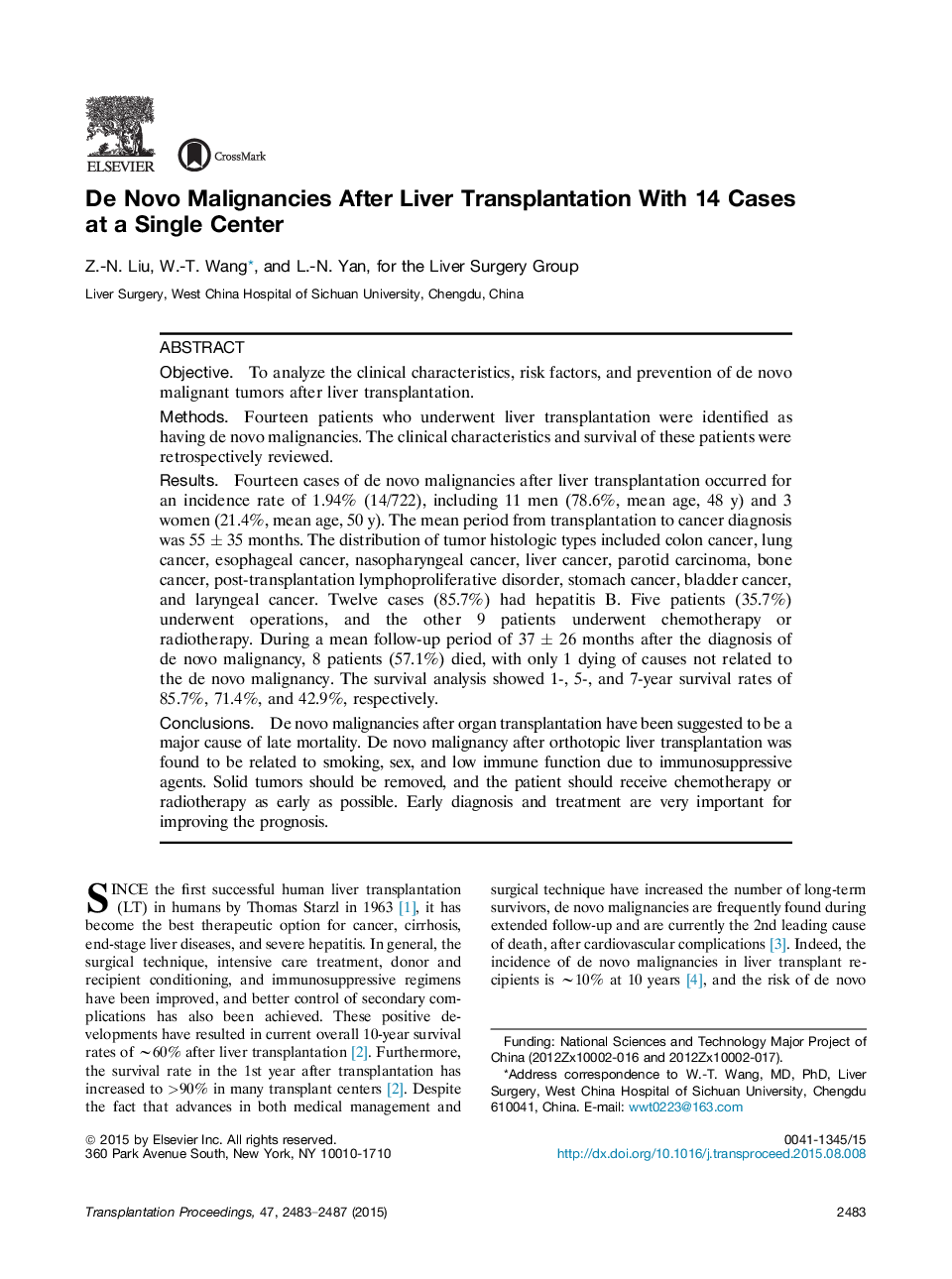| Article ID | Journal | Published Year | Pages | File Type |
|---|---|---|---|---|
| 4257028 | Transplantation Proceedings | 2015 | 5 Pages |
ObjectiveTo analyze the clinical characteristics, risk factors, and prevention of de novo malignant tumors after liver transplantation.MethodsFourteen patients who underwent liver transplantation were identified as having de novo malignancies. The clinical characteristics and survival of these patients were retrospectively reviewed.ResultsFourteen cases of de novo malignancies after liver transplantation occurred for an incidence rate of 1.94% (14/722), including 11 men (78.6%, mean age, 48 y) and 3 women (21.4%, mean age, 50 y). The mean period from transplantation to cancer diagnosis was 55 ± 35 months. The distribution of tumor histologic types included colon cancer, lung cancer, esophageal cancer, nasopharyngeal cancer, liver cancer, parotid carcinoma, bone cancer, post-transplantation lymphoproliferative disorder, stomach cancer, bladder cancer, and laryngeal cancer. Twelve cases (85.7%) had hepatitis B. Five patients (35.7%) underwent operations, and the other 9 patients underwent chemotherapy or radiotherapy. During a mean follow-up period of 37 ± 26 months after the diagnosis of de novo malignancy, 8 patients (57.1%) died, with only 1 dying of causes not related to the de novo malignancy. The survival analysis showed 1-, 5-, and 7-year survival rates of 85.7%, 71.4%, and 42.9%, respectively.ConclusionsDe novo malignancies after organ transplantation have been suggested to be a major cause of late mortality. De novo malignancy after orthotopic liver transplantation was found to be related to smoking, sex, and low immune function due to immunosuppressive agents. Solid tumors should be removed, and the patient should receive chemotherapy or radiotherapy as early as possible. Early diagnosis and treatment are very important for improving the prognosis.
